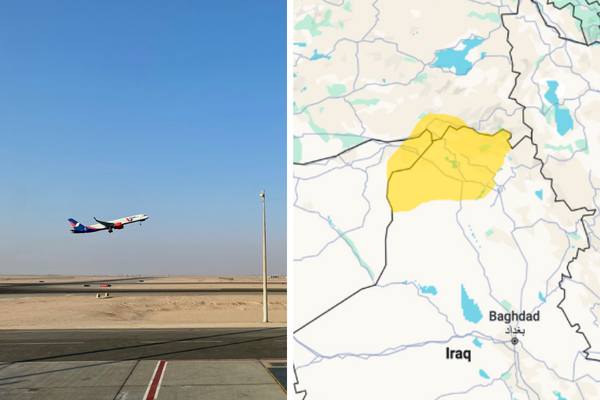Assyrian wedding traditions - and how I ended up documenting them
A biology lab in Detroit, a content creator in Sweden and a Google document that didn't get deleted. This is both the story of how Andrew Rassam ended up documenting Assyrian wedding traditions - and his actual documentation.
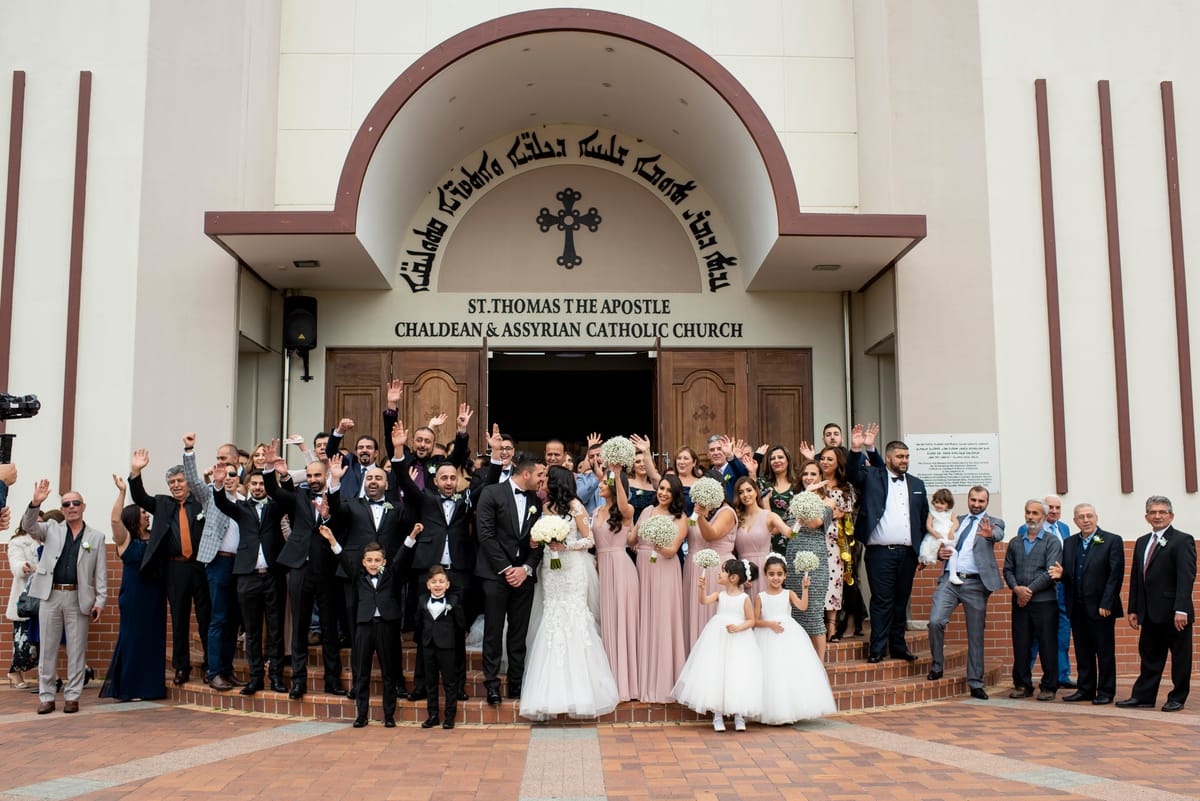
In this article, Andrew Rassam takes us through the intricacies of Assyrian wedding traditions with the help of Ramcina Gabriel, a content creator – beginning with the backstory of how a young biology student from Detroit, who had just found out he's Assyrian, teamed up with a Swede who always knew she's Assyrian, to document some of the most beautiful Assyrian wedding traditions.
"As it turns out, there weren’t any sources. She got all the information from our community elders"
One of the first projects I had as part of my non-profit, Suraye Educational Collective, was a Google Document that outlined various parts of Assyrian culture that were rather unknown. This project was dubbed the “Cultural Document”. Having just learned I was Assyrian a few months prior (a story of its own), I was rushing with ideas on how I could play my part to preserve our culture. The idea for the Cultural Document came completely on a whim, and I started it just before midnight on January 7th of 2024. I remember being in my Biology research lab, waiting for something to finish for an experiment, and while I was waiting, I would jot down notes about festivals and cultural symbols (!) I even got three of my friends to help me with the document and add information on it regarding a number of different topics. It was a very prominent mark in my early days of being involved in the Assyrian community.
Fast forward a year later, and I decided to retire the Cultural Document for good. From late March 2024 up to the present day, it had rarely seen updates or changes in content. In fact, most of the information on it was copied straight from Wikipedia, so barely any of it was unique at all. And retrospectively, I’m pretty sure nobody really knew of its existence either. However, I wanted to make sure that before I deleted the document there wasn’t any key information that I would lose. One of these sections caught my eye; the wedding traditions.
One of the three friends I mentioned earlier who helped me is Ramcina Gabriel. Ramcina is a fellow Assyrian activist and social media content creator originally from Al-Hasakah, and traces her ancestry to Hakkari from before the Assyrian genocide. Her family survived the Simele massacre and was one of many who fled to the French mandate of Syria. Currently, Ramcina lives in Sweden where she runs the Instagram page Assyrian Explained, and one of her first videos discussed just some of the wedding traditions in our nation. While Ramcina wrote the info about the Khomala dress, I copied down parts of the information she discussed in her videos onto my document.
I asked Ramcina if she had any sources online that she used to help with her videos. As it turns out, there weren’t any sources. She got all the information from our community elders, collected it into a script, and recorded the video. She even told me that the comments section had unique information that discussed the traditions too! As the majority of Assyrians now live in diaspora, the threat of assimilation means that these traditions and more could very well be lost in many families or even die out altogether. And so, I’ve decided to recount these traditions in article form; please read through as I detail the unique Assyrian wedding traditions, as partly explained by Ramcina Gabriel.
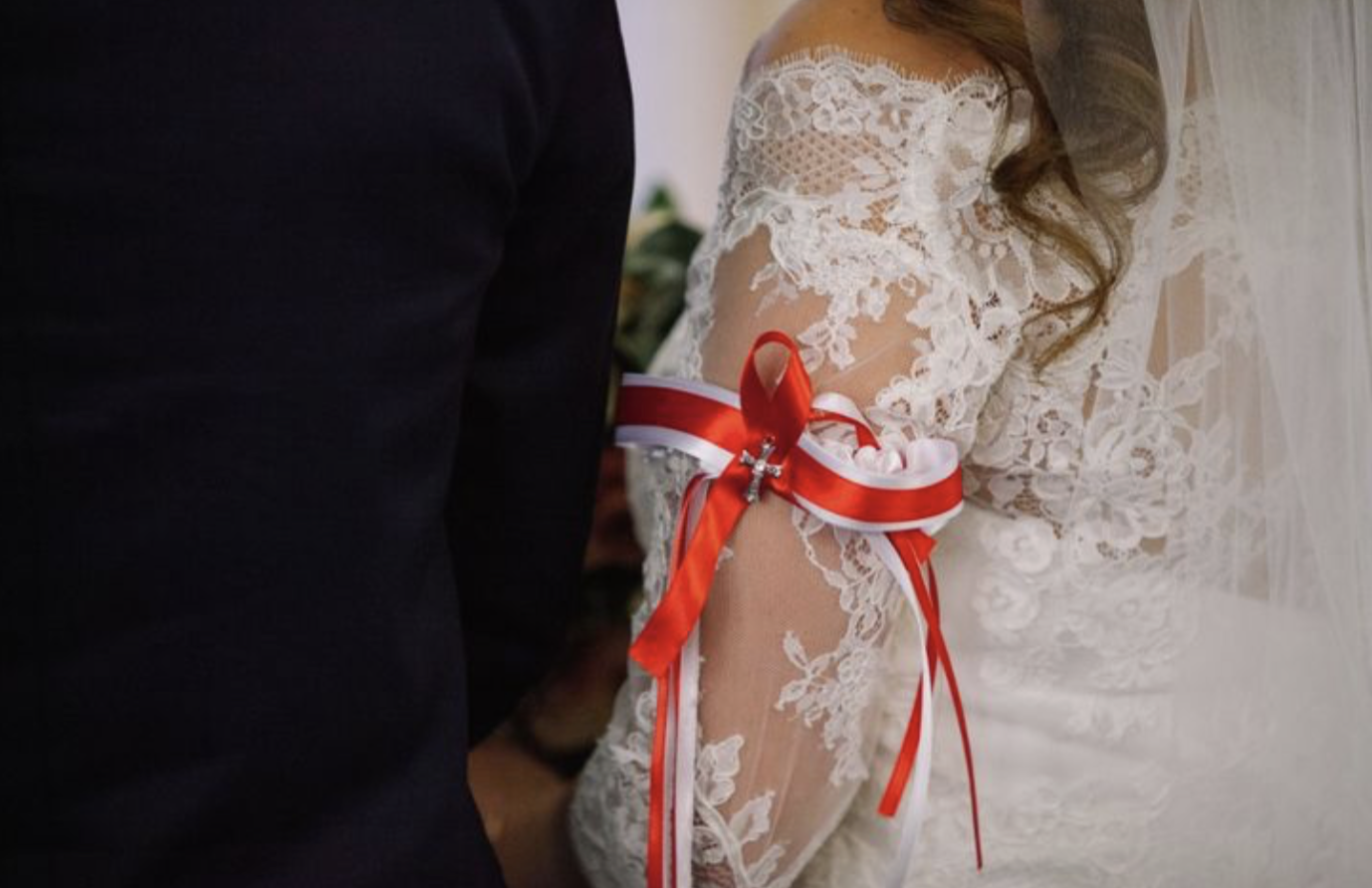
Silken crowns - a symbol of the unity of body and soul
In the past, Assyrian couples would wear braided crowns, though nowadays, they have been made into armlets for aesthetics. The groom and the bride will typically wear silken armlets in the colors red and white, symbolizing the body and soul coming together in the new marriage. Traditionally, crowns would also have the color black to represent death, which can be interpreted as the expression “Til death do us part.” Amongst Assyrians of the Chaldean Catholic church from Iraq, the armband may be replaced with a white bow to signify the wedding as a blessed sacrament. However, this custom isn’t present among Assyrians from the Syriac Orthodox Church. Usually, the armlets are given to a newly baptized child by the priest who performs the baptism and are then kept by the family until his/her marriage, and their name in Assyrian Aramaic is "kleele".
Ceremonial 'stealing' from the bride's house
One tradition involves stealing from the bride’s house; there is no reason in particular why this is done, but many believe it’s a symbolic way of showing dominance over the bride’s family and her house.
Comments under Ramcina’s video, however, say otherwise. Supposedly, there are two reasons as to why an item is stolen from the bride’s house. Firstly, the stealing helps distract the bride’s family from the fact their daughter has left the house by redirecting their attention to the stolen item. In effect, this symbolizes that the groom’s family is taking the bride from her family’s house. And secondly, the stolen item will then be gifted back to the bride so that it reminds her of her family in the new home.
Another comment suggests that plates would be stolen and broken directly in front of the bride and groom. This is an ancient Assyrian tradition, rooted in the belief that Ishtar (the goddess of love and fertility) would provide the bride and groom a long, healthy marriage with children.
Showering of the groom (ܚܝܵܦܬܵܐ ܕܚܸܬܢܵܐ)
The showering of the groom, also known as “Khypta d’Khetna” (ܚܝܵܦܬܵܐ ܕܚܸܬܢܵܐ), is essentially the Assyrian version of a bachelor’s party. In this tradition, the groom is prepared for his new life as a wedded man, with singing, dancing, washing him with water and dressing him in new clothes.
The tradition is usually done by the groomsmen, who in the past was also the groom’s godfather. Back in the day, every family had a kindred family from which they would have their godfathers and best man; in those days there was no such thing as having multiple groomsmen or bridesmaids. The bride would bring her godmother, the groom would bring his godfather where they would prepare each for the upcoming wedding. This is because the godparents were seen as older and more experienced, and would be able to teach the to-be couple on what to do on the night of the wedding. The groom would also be expected to hold a child as a symbol of fertility.
Additional information about the tradition from Wikipedia states that at the same time, a group of female singers will sing a song called “Lilyana”. This tradition was only performed by Assyrians in Hakkari, yet even so, "Lilyana" was not performed by all Assyrians in Hakkari. It was predominantly seen in Assyrians from Sapna to Barwar, and to the Tyari and Tkhuma tribes.
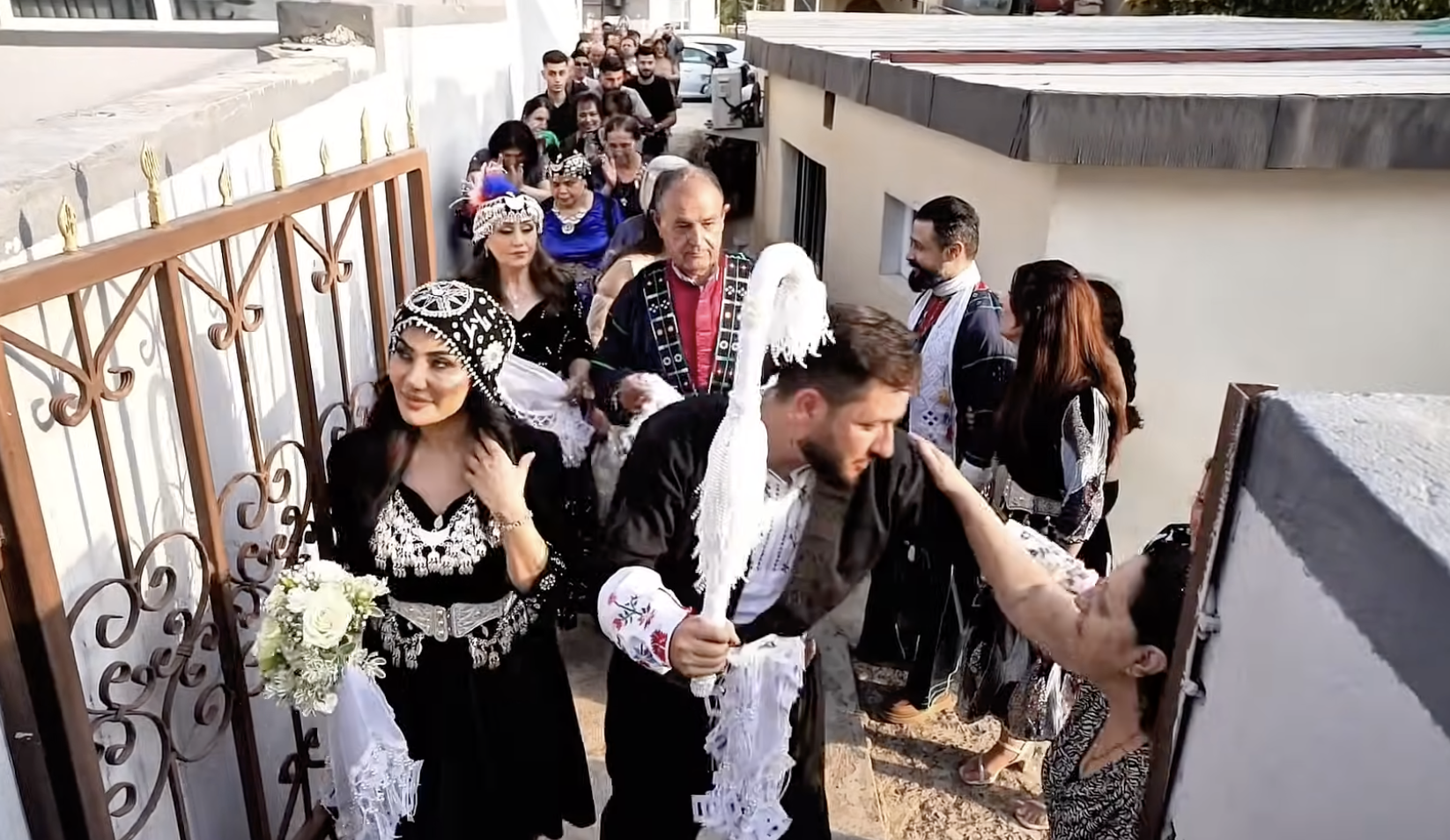
Platat kalu (ܦܲܠܲܛܬܵܐ ܕܟܲܠܘܼ) and Dweqtat tarr'a (ܕܒ̣ܵܩܬܵܐ ܕܬܲܪܥܵܐ)
“Platat kalu” (ܦܲܠܲܛܬܵܐ ܕܟܲܠܘܼ) is a tradition that happens right before the bride leaves her house, when the groom’s family comes to take her. The groom’s family would bring with them a basket full of walnuts, raisins, and “Kahde” (ܟܵܕܹ̈ܐ), traditional Assyrian cookies, to show their good intentions.
Right before the bride leaves her house, her brother or cousin blocks the door and demands a dowry from the groom’s family. Once the brother/cousin is satisfied, they will stop blocking the door and allow the bride to leave. This tradition is known as “Dweqtat Tarr'a” (ܕܒ̣ܵܩܬܵܐ ܕܬܲܪܥܵܐ), and although it’s more symbolic nowadays, it still adds a nice and playful touch to the wedding festivities.
The bride enters her new home (ܥܒ̣ܵܪܬܵܐ ܕܟܲܠܘܿ ܠܒܲܝܬܵܗ ܚܲܕ̄ܬܵܐ)
Back in the days, before the bride steps into her new house, she would draw a cross on the door to bless it. Afterwards, she would break a jar full of candy at the entrance. This tradition traces back to the Assyrian empire, and is meant to ward off any evil and bring sweetness and blessing to the couple’s new life.
Gablana (ܓܒܠܵܢܵܐ)
This tradition was not actually in Ramcina’s videos. In fact, I can’t recall where I heard about Gablana, but at some point I inquired into the wedding traditions that she discussed and learned about it.
Gablana is a tradition that occurs during the wedding party, when a tree branch decorated with fruits and sugar would be auctioned to the guests for their own possession. The money would then go to the newly-wed couple as a gift to help start their new life together. This tradition is seen as a resemblance of a start to this new life, with the fruits of their love representing offspring and the sugar representing sweet memories that they’ll make together. Gablana potentially also draws a parallel to the Tree of Life symbol that Assyrians have in their culture.
The tradition stems from the Hakkari region, but could also be practiced in other parts of the Assyrian homeland nearby. Unfortunately, the tradition is not really practiced in the present day, with only a few keeping the tradition.
Mashmeta (ܡܲܫܡܲܥܬܵܐ) - The engagement ritual
As part of writing this article, I wanted to seek out other wedding traditions that Ramcina didn’t discuss in her videos. One of the traditions I found was the “Mashmeta” (ܡܲܫܡܲܥܬܵܐ), which means “the hearing” or “the proposal”. Mashmeta is an engagement ritual where the groom’s family formally asks the bride's family for her hand in marriage. The family of the groom will visit the family of the bride without the groom present, while the bride is in her room waiting to hear the outcome. If the woman’s family accepts, they will begin to pick a day for the engagement party, but not before telling the bride the outcome of the negotiations.
This tradition is also practiced by Chaldean Catholics from across the Assyrian homeland. Those from Iraq practice the tradition under the name “Tenatha” (ܬܲܢܲܝܬܵܐ), which translates to “The Word”. During this version, a traditional saying can be offered, such as…”We would like to plant a flower from your garden into ours.” Sometimes, the bride’s mother will serve tea and the groom’s family will refuse until they “give away” her daughter, the bride. When the bride’s family accepts, the groom’s family will give her jewelry, and the families begin to get acquainted. Meanwhile, Chaldo-Assyrians from Turkey call the tradition “Ptakha Urxa” (ܦܬܵܚܵܐ ܐܘܼܪܚܵܐ).
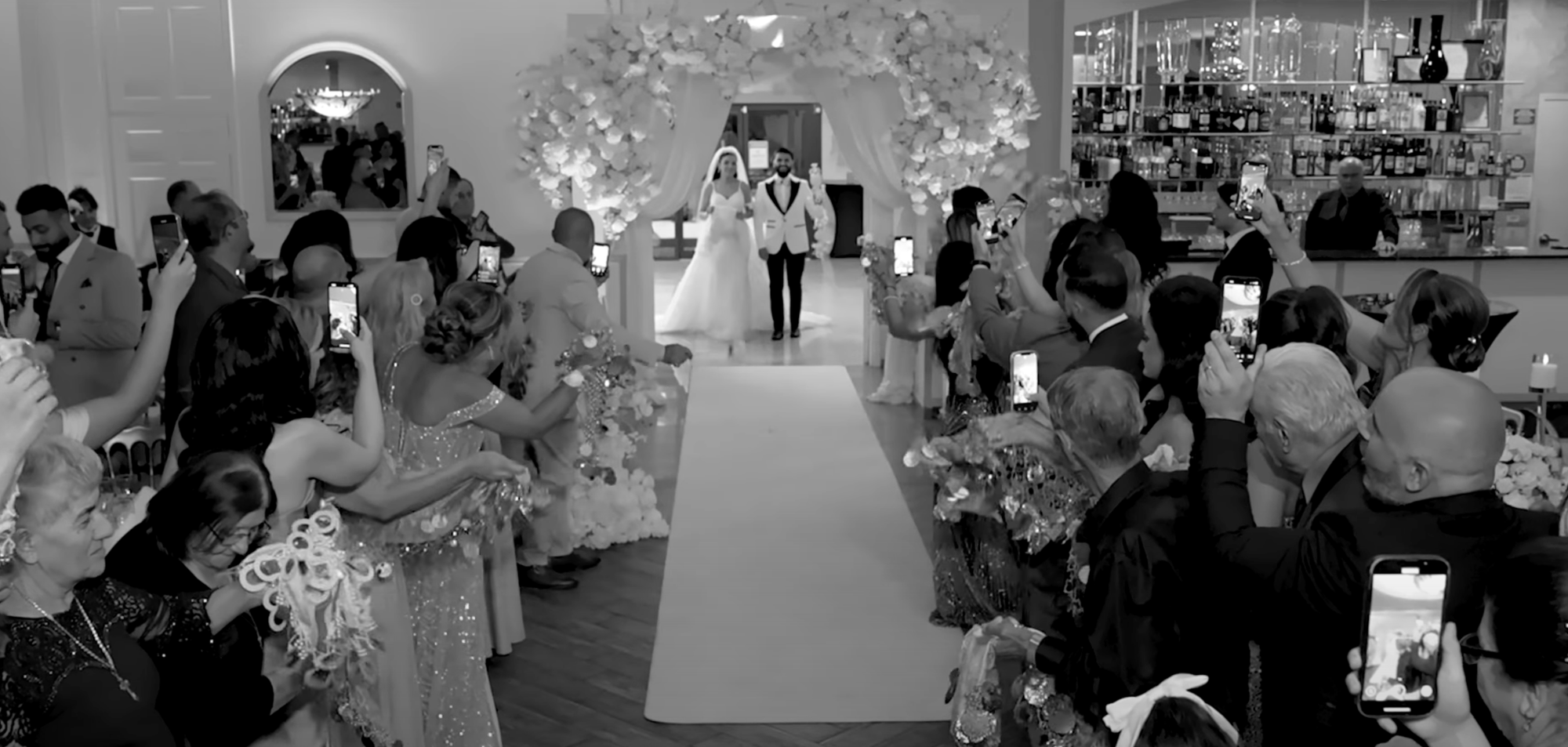
Dancing and zaffa - entering the wedding dancing
Interestingly, another tradition of Assyrian weddings (one which I’ve even seen myself) is for families of the bride and groom to leave their house and dance in the streets, with music from the zurna and davula playing alongside them.
At the beginning of a wedding party, the bride and groom are introduced during what is called a zaffa (ܙܲܦ݂ܵܐ). During the zaffa, everyone in the bridal party dances around the bride and groom as they’re escorted into the reception hall or ceremony. The bride and groom also perform a dance of their own, accompanied by music.
It should be noted that "zaffa" is a Lebanese/Syrian Arabic word, whereas the native word to describe the tradition in Assyrian Aramaic is “mawarta” (ܡܲܥܒ̣ܲܪܬܵܐ).
Picking a bride on the screen - the Assyrian matchmaking app before apps were a thing
In traditional Assyrian marriages, the most common ways to have a spouse are either to fall in love with the person or to have an arranged marriage. One tradition that I’ve seen poked fun of as of lately is how families would play a VHS tape on a TV and the family's son-to-be-wed would pick the girl of their choosing to become their wife. Family discussions would begin soon after, and if successful, the new couple is wed!
I of course couldn’t include everything about Assyrian weddings in this article; our traditions are incredibly diverse and vary from village to village, region to region. There’s probably dozens of other traditions that I neglected simply because there’s no info about them! But I certainly hope that this article intrigued many who were interested in wanting to know more about the various Assyrian wedding traditions.
By: Andrew Rassam
The author would like to thank Ramcina Gabriel for making this article possible since most of the information comes directly from her.
If you’d like to see Ramcina’s videos, please visit this and this link on Instagram, or watch on the Assyrian Explained Youtube channel


